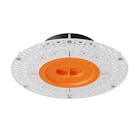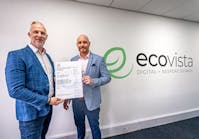Circadian disruption, leading to a wide range of problems for health and wellbeing, is common today because many of us are not exposed to a regular, 24-hour pattern of bright light during the day and dim light at night. The modern built environment minimizes the luminous contrast between day and night. Daytime light exposures are significantly lower and nighttime light exposures are potentially higher than those under which we evolved, i.e., sunlight during the day and firelight at night.
The overarching goal of the recently published design guideline for promoting circadian entrainment with light for day-active people [DG 24480] is to provide daytime levels of illumination in buildings that help people return to the more natural pattern of bright days and dim nights. Although the focus of the document is on daytime light exposures for people who are normally day-active and night-inactive, advice is also given to keep nighttime light levels low, including those from self-luminous displays.
The document provides empirical evidence from a number of field experiments demonstrating that exposures to bright light during the day improve sleep quality at night and reduce sleepiness during the day. Because circadian-effective light is different than visually-effective light, the document also provides a calculation method for achieving levels of illumination during the day that are bright enough to support circadian entrainment. Since there are a number of ways to calculate circadian-effective light, a procedure to compare calculation methods is also provided in the document.
The Collaborative Standards Development System (CSDS) was used to develop DG 24480. A balanced task group representing a wide range of stakeholders, from scientists, to manufacturers, to consultants to program managers, volunteered to serve. Two rounds of public comments were conducted and UL published replies to every comment. That public process, providing wide and diverse input, significantly improved the final published document.
The members of the task group include:
· Chris Brown, Lighting Consultant
· Lei Deng, GE Current, a Daintree company
· Mariana Figueiro, Rensselaer Polytechnic Institute
· Alan Lewis, Optometry Consultant
· Adam Lilien, Underwriters Laboratories
· Terry McGowan, American Lighting Association
· Satchidananda Panda, Salk Institute
· Govi Rao, Carbon Group Global
· Mark Rea, Rensselaer Polytechnic Institute (chair)
· Christopher Steele, U.S. Navy
· Bryan Steverson, U.S. General Services Administration
· Amy Walker, Underwriters Laboratories
· Karen Willis, National Electrical Manufacturers Association
· Edward Yandek, Lighting Consultant
Developed for public benefit, DG 24480 is a significant first step, providing the foundation for lighting innovations and practices that serve the public better than is common today.
Task group chair Dr. Mark Rea will discuss DG 24480 at Strategies in Light on Wednesday, February 12, from 1:30 PM - 3:00 PM. Learn more at https://www.strategiesinlight.com/.
About the Lighting Research Center
The Lighting Research Center (LRC) at Rensselaer Polytechnic Institute is the world's leading center for lighting research and education. Established in 1988 by the New York State Energy Research and Development Authority (NYSERDA), the LRC conducts research in light and human health, transportation lighting and safety, solid-state lighting, energy efficiency, and plant health. LRC lighting scientists with multidisciplinary expertise in research, technology, design, and human factors, collaborate with a global network of leading manufacturers and government agencies, developing innovative lighting solutions for projects that range from the Boeing 787 Dreamliner to U.S. Navy submarines to hospital neonatal intensive-care units. In 1990, the LRC became the first university research center to offer graduate degrees in lighting and today, offers a M.S. in lighting and a Ph.D. to educate future leaders in lighting. Learn more at www.lrc.rpi.edu.
About Rensselaer Polytechnic Institute
Founded in 1824, Rensselaer Polytechnic Institute is America's first technological research university. Rensselaer encompasses five schools, 32 research centers, more than 145 academic programs, and a dynamic community made up of more than 7,900 students and more than 100,000 living alumni. Rensselaer faculty and alumni include more than 145 National Academy members, six members of the National Inventors Hall of Fame, six National Medal of Technology winners, five National Medal of Science winners, and a Nobel Prize winner in Physics. With nearly 200 years of experience advancing scientific and technological knowledge, Rensselaer remains focused on addressing global challenges with a spirit of ingenuity and collaboration.
Contact:
Rebekah Mullaney
Manager, Research Communications
Lighting Research Center
Rensselaer Polytechnic Institute
(518) 687-7100





